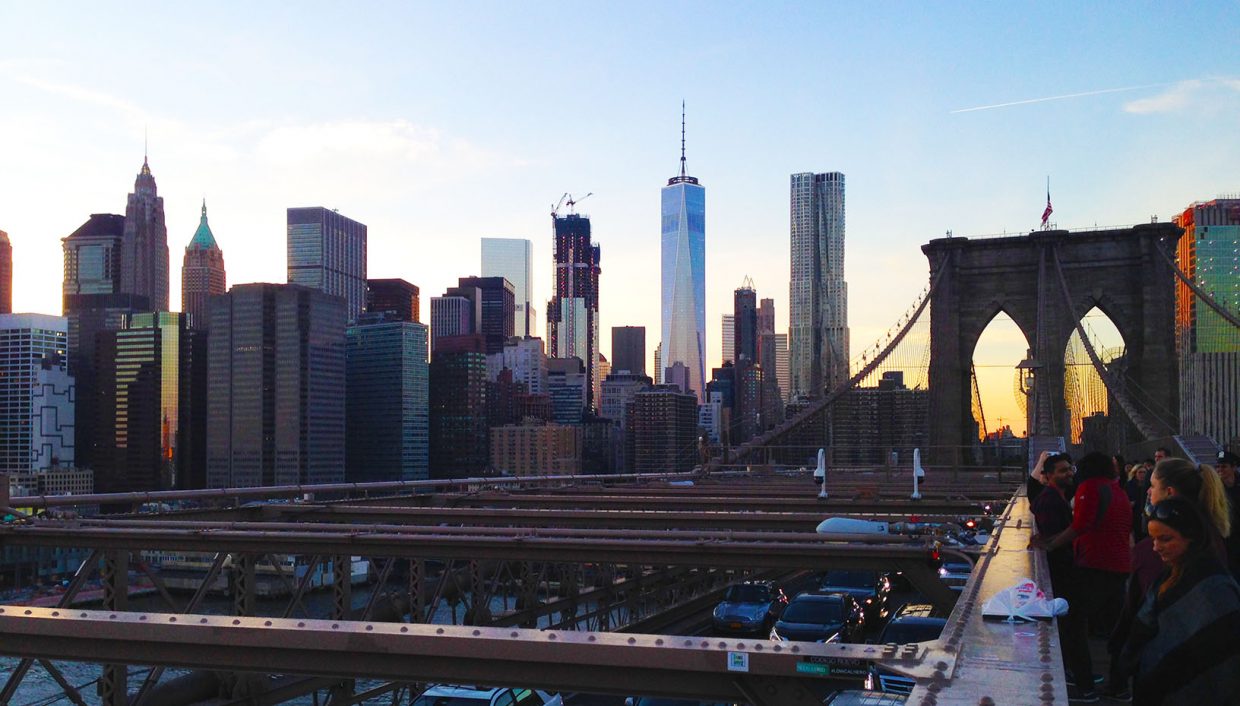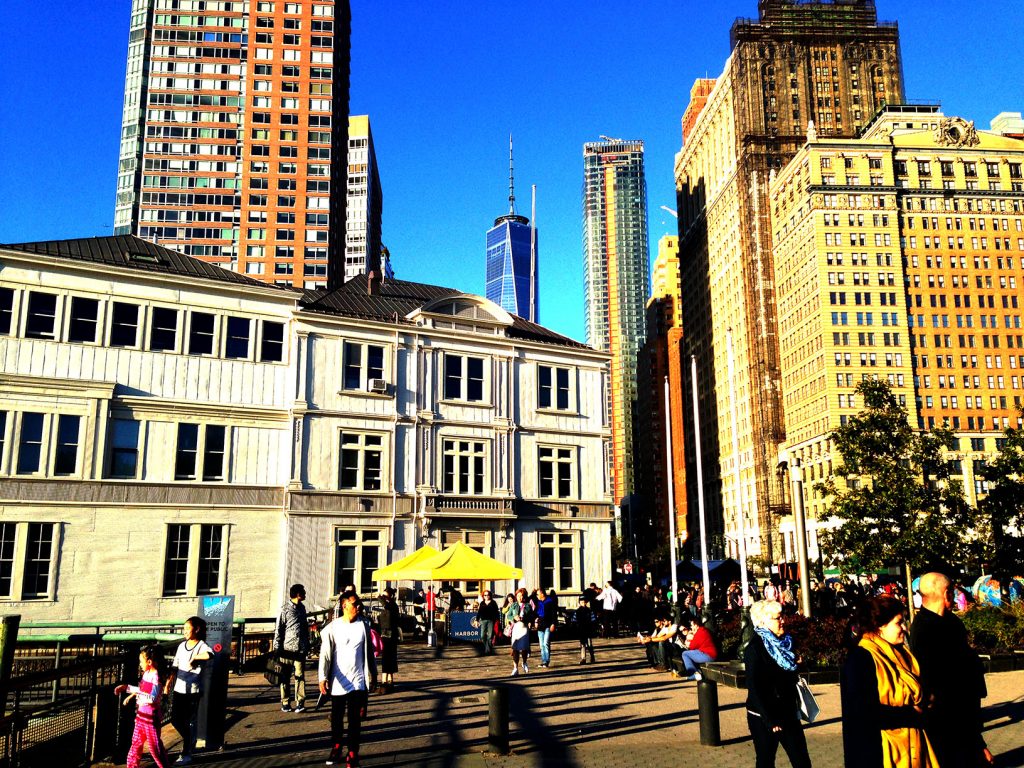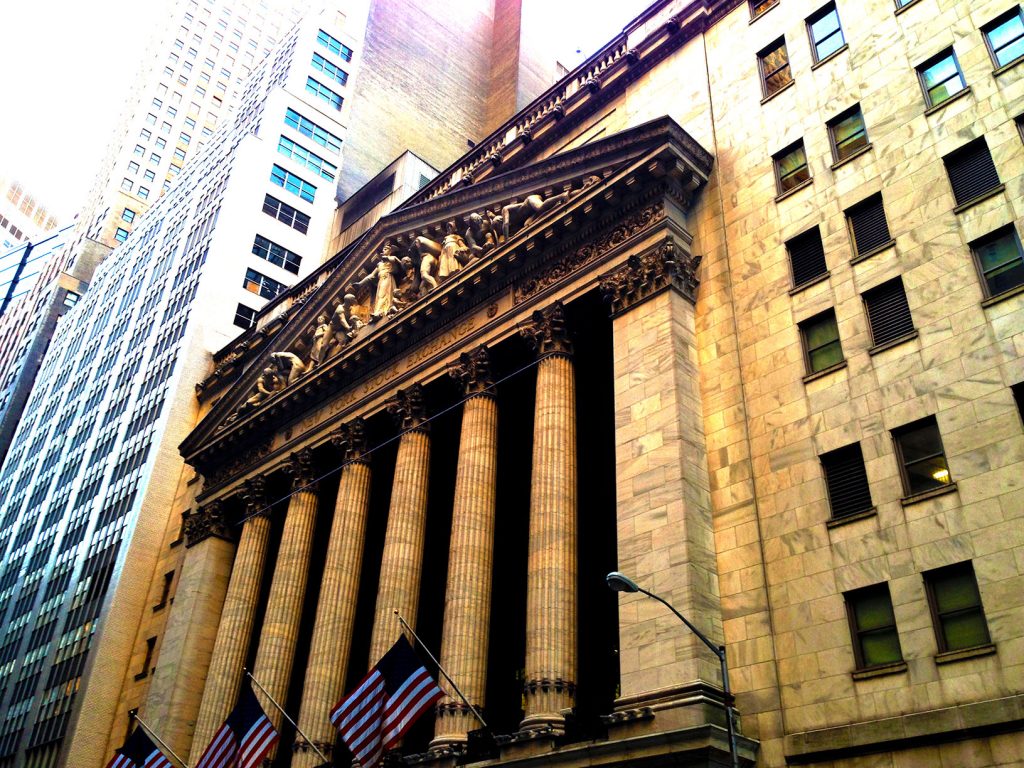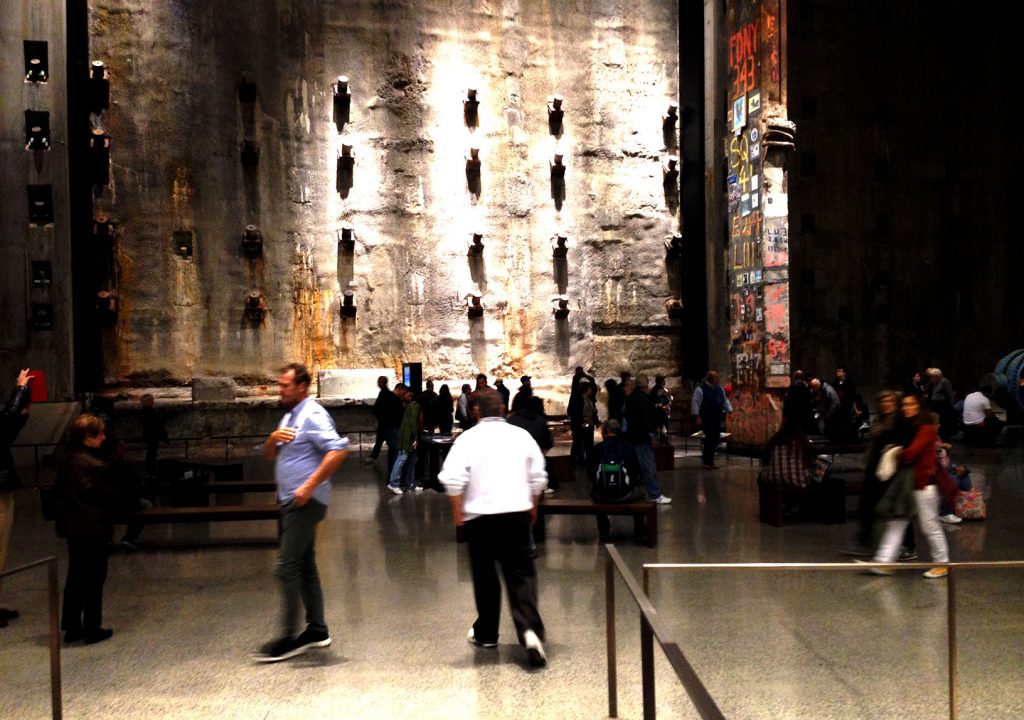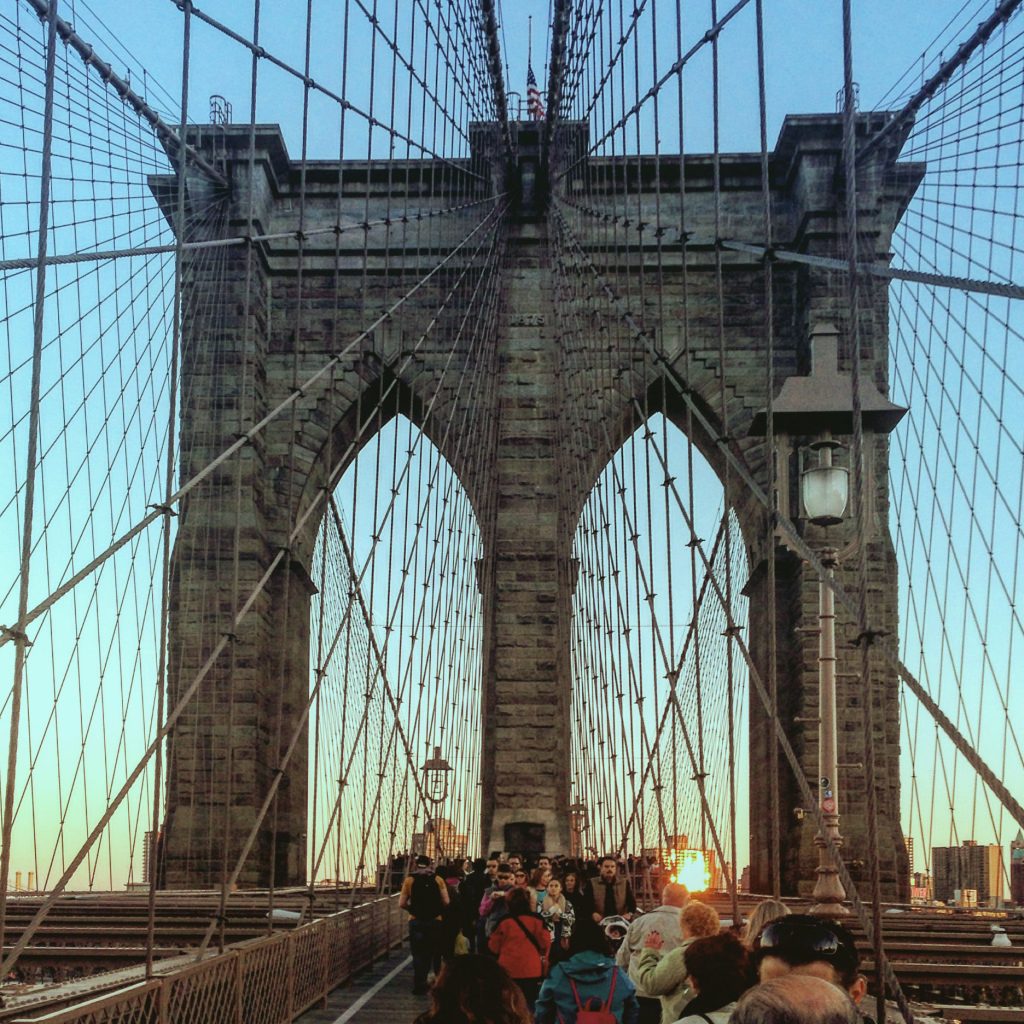Living: airbnb in Logan Square, Chicago, IL
Working: onsite @ client
Laundry: J&M Laundromat, Logan Square
This week in Laundry I reflect on SATE.
I met one of my best friends at a Themed Entertainment Association SATE conference in Sarasota two years ago. It was my first experience in anything remotely associated with the industry. I had yet to land my first gig. Though I already planned to move to LA at the end of the year. And my friend had yet to start his internship. Though he already had accepted it.
We both grew up in the Milwaukee area. I remember making a comment over drinks that the two of us would measure our careers each year at SATE. As we lived and learned through both triumph and heartbreak.
Two years later, and that’s still the case. SATE has come and gone. And my friend and I come together to reflect on our careers. And to savor one of the few moments we get to see each other. He’s now enjoying over a year as a full time employee of a major industry supplier. I’ve had more success and failure in the past two years that I could have ever imagined. And I can feel that I’m ready for what’s next.
I found SATE this year to be really valuable. For a lot of reasons. Not just because I enjoyed some time in New York. But there are a handful of strong lessons that stood out to strike a chord.
First was the personal brand. Of the younger generation’s desire to impart that brand, the representation of their personal identity, into the world around them.
I saw this in multiple presentations.
First with Sean Saylor from MTV international. With the transition of the MTV brand from I want my MTV to I am my MTV. Creating an entire cable television platform that immediately responds and represents content contributed by viewers. There couldn’t be a more direct representation of personal brand expression. Of enabling the viewers to express their personal identity in a public medium that was once predefined and decided for them. But no longer.
Second was Vaki Mawema from Gensler. There was a moment in the presentation or question session when he talked about what a modern interview session. Where he expressed that gone were the days of the interviewer solely evaluating the interviewee for skillset and team fit. That now, the interviewee asks the interviewer. The future manager. They interrogate. The demand the question – why should I align my brand with yours?
I found this so insightful – because it reflects the core ethos of the oncoming generation. Not just in their entertainment engagement. But in their employment engagement as well. This indicates the behavior lives at the fundamental core.
Sean and Vaki strike such similar comments in such different ways. Observations of the younger generation. Of the pride of the individual. The representation of their identity through a sort of brand. And the knowledge and desire to impart that brand broadly – be it in a broadcast medium, or in an alignment of brand with an employer.
So it is in these two cases, so it should be in the park. As designers we should take notice of this innate habit and desire of the parks’ young guests, and cater to it. No longer can the park remain static. The park should respond to the guest. Not just interact with the guest, but provide opportunities for the guest to impart their identity – their brand – into the park. This could be done with colored lights. Or with their face on a wall in a residual projection map that lingers throughout the night. In any mechanism that first might be a part of a brand – of a representation of their personal identity – and secondly with any mechanism that allows the imprint of that brand into the park. By light, by sound, by graphic, by picture. By any well studied brand element.
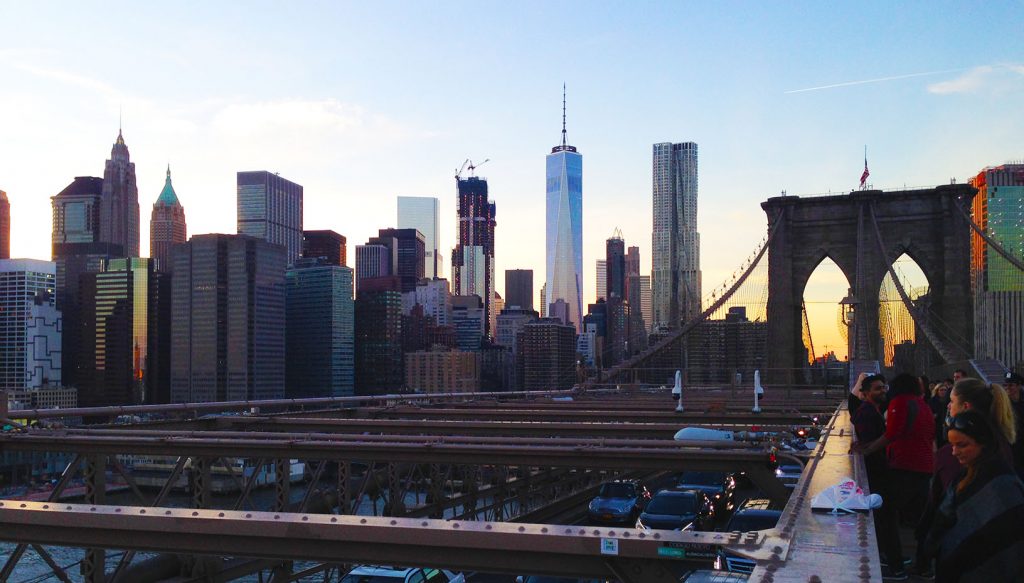
Can a skyline be a brand? I think, in the case of Manhattan, yes. The Manhattan skyline from the Brooklyn Bridge
After noticing this trend, I was surprised to find this concept at work to great effect at the September 11 memorial museum, in a couple of different instances.
One was a piece that allowed a guest to write messages on a large touch screen. Those messages would then appear in an elegant ballet of well-timed writing upon the actual concrete foundations of one of the towers, still standing, as a part of the massive museum buried below grade.
Another is an opportunity to record a message – a memory, a reflection, a consideration, an expression of grief – in a video booth. Those recorded messages add to the pool of others, all taking turns to play out upon a long stretch of multi-projected wall.
Both of these digital technology applications are powerful. They are very tastefully done. Not as entertainment, but as memorial and education. As a part of both grief and education. And both of these installations are excellent examples of experiences that allow a guest to impart a form of their personal identity – a part of their personal brand – into the space. In a semi-permanent mechanism.
Another lesson I absorbed from this year’s SATE involves a much more technical bend. It was a familiar problem, stated by multiple vendors, not within the presentations, but in the moments in between them.
Like an audio track stuck on loop, I heard the problem repeated and explored again and again across suppliers. As well as an expression to tackle the problem afresh. The problem: diagnostic reporting and management. Perhaps the most lack luster of any function among the many in our show and ride equipment. But necessary.
Diagnostic information serves two different primary functions for two different customers. For the original developer it aids the specific function of creation. Of identifying the issues during manufacturing and initial programming. For park operations and technical services, the owners of the equipment after initial delivery, the diagnostics help in identifying issues and aid ongoing maintenance.
The former customer tends to require and prefer very specific and detailed information. The latter values trend analysis identifiable to specific parts or subsystems with data categorized to failures.
I also find it interesting that each of these vendors brought up the subject in conversation unprompted. I’m certainly not one to provoke a foray into diagnostics – not when we can talk about motor control, curve reconstruction, real time processing, clock synchronization, and motion profiling. All topics I find engaging.
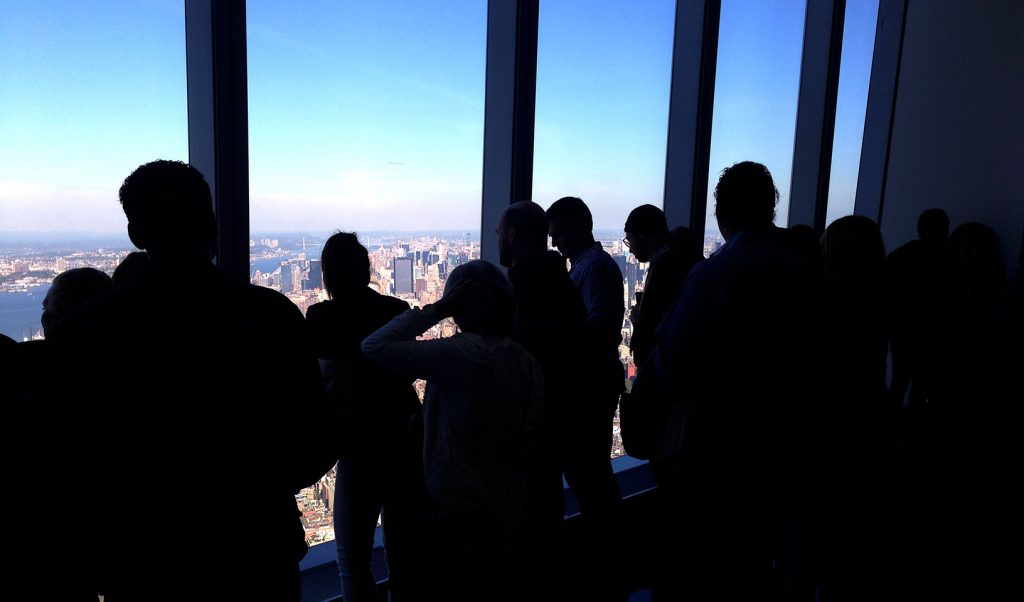
Many observers. Much data. One data standard. The SATE attendees enjoying the view at the One World Observatory
Not that diagnostics aren’t interesting. But they’re interesting for a different reason – because they’re so valuable to different people in different ways. This is why I find the problem very engaging. I find figuring out how different people work, and how to make that work better, very interesting.
My final impression from SATE is a very personal and yet simple reflection. I really, really, really need to be spending more time with theater nerds. They’re too much fun. And missing in my life.
Also I may be getting less awkward in interpersonal interactions. Maybe. It’s hard to say.
Now that yet another year of SATE as come and gone, I look forward to the new. I’m out of New York. I’m back in Chicago to visit a client. I’ll soon be moving on to DC. Then NC. Then GA. And then Orlando for the IAAPA trade show.
It seems, looking down this road, the wash keeps looking brighter and brighter. And I’m not even using bleach.
